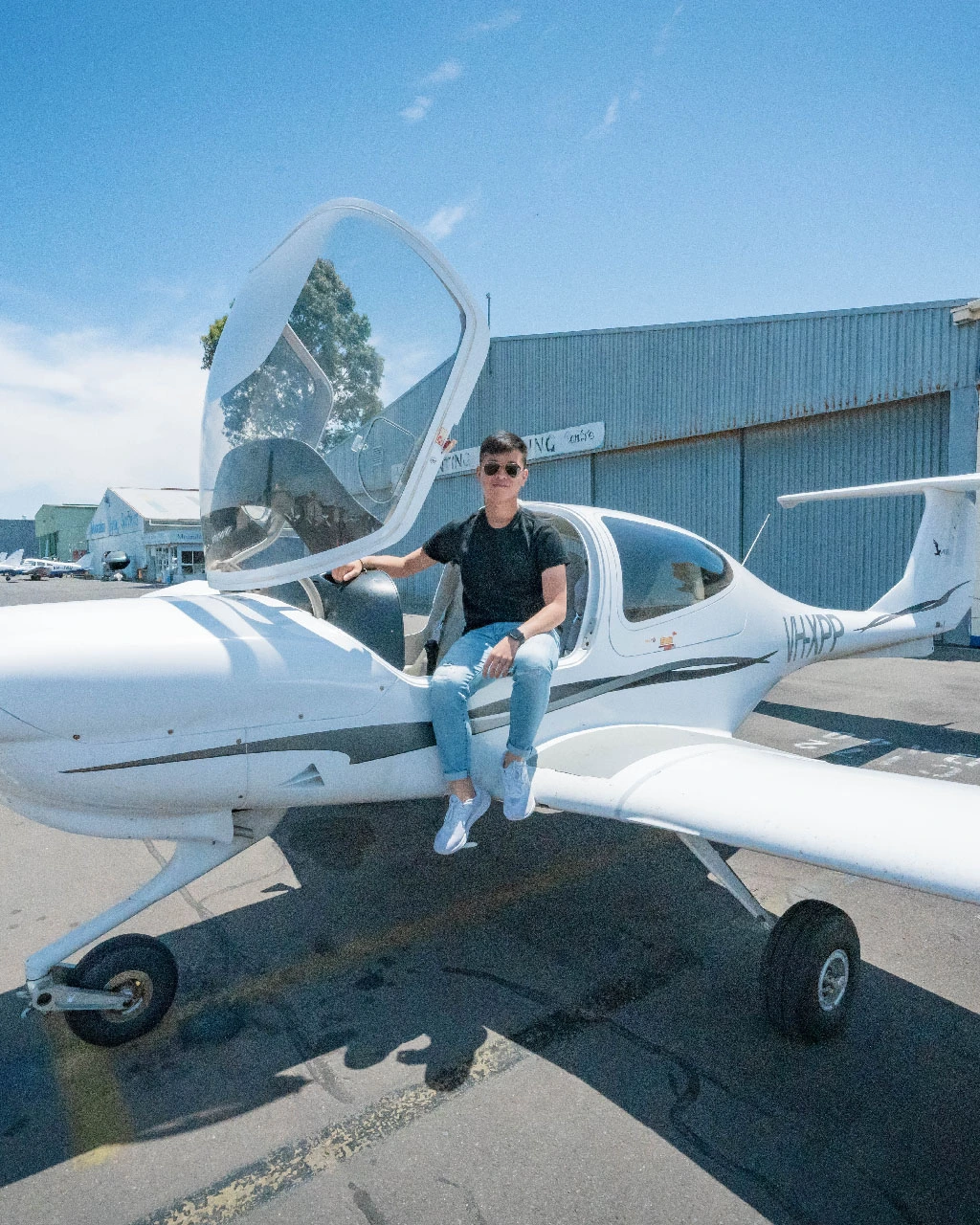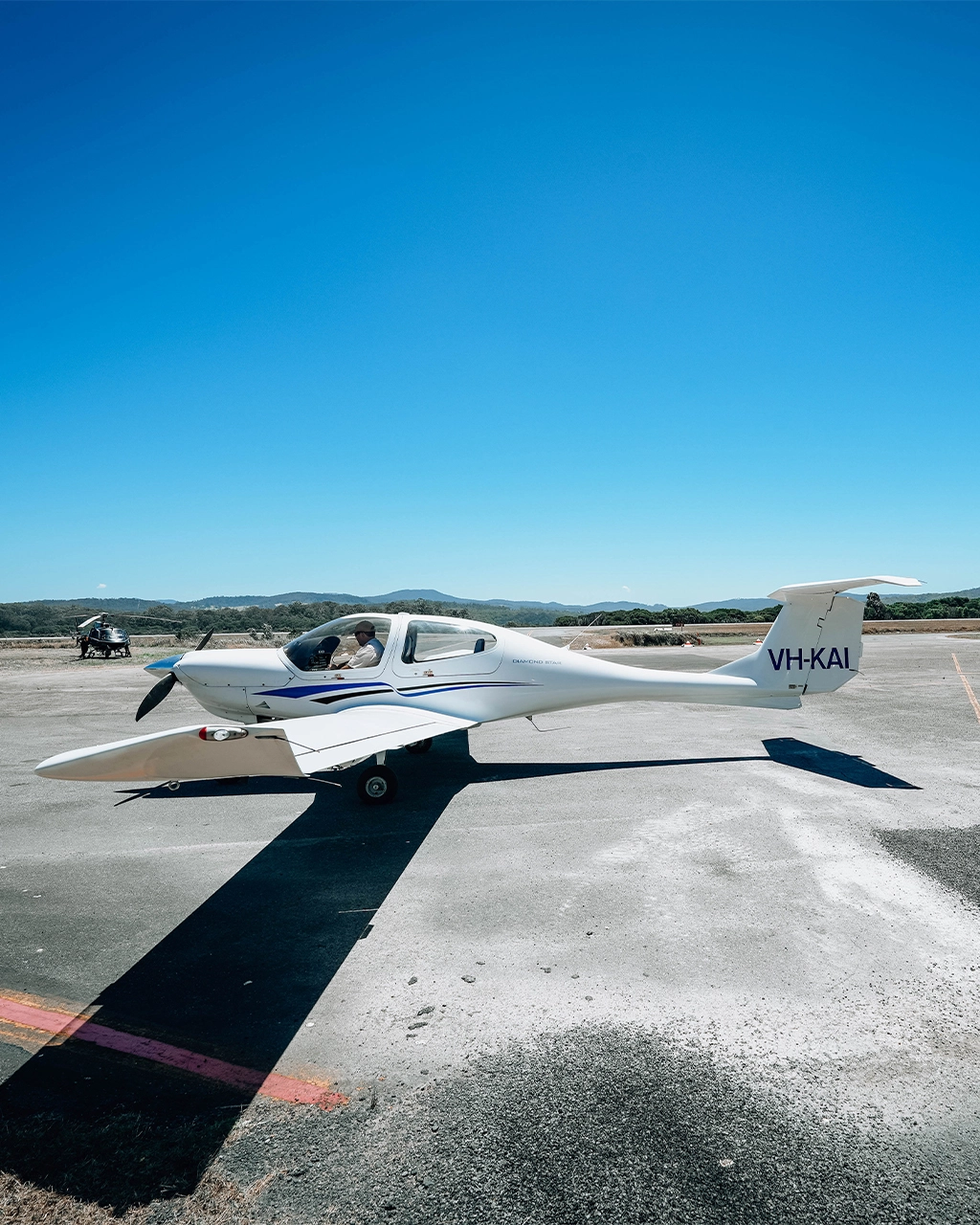Aviation can be an incredible journey for you. You’re allowed to dream and you’re allowed to have fun – that’s why we’ve put together a guide to professional aviation careers!
Aviation is a world filled with opportunity. With opportunities comes the need to make decisions: what is the aviation career path for you? One of the most important considerations in making these decisions is that you don’t have to make one choice. You can actually make multiple. For example, you might choose to fly recreationally, before joining the Australian Defence Forces. Or you might choose to be an instructor whilst you increase your hours on your way to becoming a Royal Flying Doctor Service pilot or a Commercial Airline pilot.
If you’re in the process of thinking about what you’d like to do with your aviation career, here is a brief guide to professional aviation careers to help.
Become A Flying Instructor
The first aviation career option, in our guide to professional aviation careers, happens to be the most attainable option. A flying instructor! Once you complete your basic training, it’s not a huge leap to becoming a flight instructor and getting paid to fly. Once an instructor, you may decide you like it and keep going – many pilots do! But given you’ll be getting paid to fly, you’ll also be increasing your hours and experience which can open doors to other aviation career options.
There are different levels of instructors (mainly Grade 1, 2 and 3), with Grade 1 instructors being the most senior. The difference between each level is what student (or instructor) operations you can sign off. You can find out more about our Flying Instructor courses here.
Fixed Wing Military Pilot
Australia’s defence forces include a range of aviation-based roles that might be the right fit for you. Pairing world-class training and equipment with a supportive team-based career, it’s easy to understand why some people love this option.
Jobs can include a Fixed Wing Pilot, a Fast Jet Pilot, or a range of aeronautical support options.
If you’re aiming for the military, you have the option to start from scratch with your application. That being said, you can also commence your aviation dreams and start learning to fly, then transfer into a military role to continue your education and training. The benefit of the latter is you can try and enjoy aviation before you commit to military requirements and minimum terms of service.
Chartered Flight Operations Pilot
Chartered flights occur every day for one reason or another. From tourism and sightseeing flights to private charters and specialised transport, pilots on chartered flight operations are required to be flexible and available to suit the passengers or cargo.
This career option can be a nice change from RPT flight operations on larger airlines, and chartered flight operations are typically in smaller aircraft which can feel more adventurous. This can also be a great stepping stone if you’re trying to advance your career towards a more specialised or senior aviation position, such as advancing to regional or international airlines.
Additionally, some chartered flight operations are flexible in that you can have another income or profession at the same time, rather than flying full-time. If this sounds like it could be you, then this is a career option to look into!
Regional Airline Pilot
Regional airlines are known for repeat passenger transport operations on small and mid-sized aircraft. You might be flying to Australia’s large airports as well as smaller regional airports. This might include Rex, Air Link, Air North, Alliance Airlines, Hinterland Aviation or another airline. Some of them are much smaller, others are bigger and more frequent.
If your end game is becoming a commercial airline pilot, then this is a very common and sensible option to advance your career towards your goal.
Royal Flying Doctor Service
In our guide to professional aviation careers, this is a big dream for many pilots so we’ll cover it more thoroughly! The Royal Flying Doctor Service is a rich piece of Australian history, dating back over 100 years from when Reverend John Flynn first founded the aeromedical service. The RFDS has five different aircraft in the fleet:
- 1. The Pilatus PC-12
- 2. The Pilatus PC-24 (used in SA/NT and WA)
- 3. The King Air B350 C
- 4. The King Air B200 C (used in Qld, NSW, Victoria and Tasmania)
- 5. and the new Beechcraft King Air 360CHW turboprop aircraft (used in QLD).
Being a critical medical aviation service, the Royal Flying Doctor Service has a high standard for its pilots. It’s quite an achievement to become a pilot for the RFDS.
For an aeromedical pilot, the RFDS typically looks for:
- Hold a current Command Instrument Rating with four or more renewals – preference for Multi-Engine Command Instrument Rating
- Hold a current Australian ATPL or CPL
- Hold a current Australian Class 1 medical in Single Pilot Operations
- 4,000 hours of flying time in total
- 2,000 hours as Pilot in Command
- 1,000 as Pilot in Command of Multi-engine aircraft
- 200 hours as Pilot in Command at night
- 200 hours of instrument time
- Turbine Experience
For Primary Health Care Pilots (Pressurised Aircraft), they typically look for:
- Hold a current Command Instrument Rating with three or more renewals – preference for Multi-Engine Command Instrument Rating
- Hold a current Australian ATPL or CPL
- Hold a current Australian Class 1 medical in Single Pilot Operations
- 3,000 hours of flying time in total
- 1,500 hours as Pilot in Command
- 1,000 as Pilot in Command of Multi-engine aircraft
- 150 hours as Pilot in Command at night
- 150 hours of instrument time
- Turbine Experience
- Three instrument rating renewals
Additionally, they will typically look for the following:
- Australian Citizenship, Residency or approved work Visa
- An Australian Command Multi Engine Instrument Rating, or military equivalent
- Undergo a pre-employment drug and alcohol test
- Maintain a current Aviation Security Identification Card (ASIC),
- Hold a current driver’s licence
- Hold a Blue Card issued by the Commission for Children and Young People.
Domestic Airline Pilot or International Airline Pilot
Becoming a First Officer on a Boeing 737…what a dream!
Generally speaking, you generally become a domestic airline pilot first and then gain enough experience before turning to international airlines and flights. Gaining entry into domestic and international airlines can be achieved. The best approach is to look at the entry requirements for consideration and then work backwards to understand what it is you need to do.
If there are several thousand hours required for a First Officer position, work back to what positions or jobs you could hold to gain those hours. Don’t give up – stay focussed and you can live that dream.
For an airline like Virgin Australia, a First Officer applicant for a 737 will have:
- A current Australian ATPL or Commercial Pilot Licence (CPL) and passes in all Australian ATPL theory subjects
- Australian Instrument Rating with MEA, IAP 2D and IAP 3D endorsement- English language proficiency Level 6
- A valid Australian Class 1 Medical Certificate
- Have a minimum total flight time of 500 hours with 300 hours in command of a powered fixed-wing aircraft (excluding ICUS), which includes 200 hours in command of a multi-engine aircraft (excluding ICUS), or
- Have a minimum total flight time of 500 hours with 300 hours in command of a turbine-powered fixed-wing aircraft, or
- Have a minimum total flight time of 500 hours on aircraft certified for operation by a crew of at least 2 pilots (multi-crew aircraft).
Other Jobs
Still looking beyond our guide to professional aviation careers? There are also other career options throughout the aviation industry that might be worth looking into if they interest you. For example, there are surveillance aircraft that need pilots, ferrying pilots, and test pilots – there are plenty of aviation positions available!
It all starts with getting your licence, then adding your endorsements, and then working towards your dream position step by step. It’s been done before, so you can do it too!
If you’re not sure where to start, or if you’re ready to advance your aviation career to the next level, now is your chance to get in touch with our team at Learn To Fly!
What Else Should I Know?
We’ve compiled a few useful posts that might help you out. Where ever you are on your aviation journey, the team at Learn To Fly Melbourne are here to help. We want you to pass your exams and have an excellent career, so please reach out if we can help support you through your course and studies!
Becoming A Flight Instructor – More Important Now Than Ever Before
We’ll discuss some of the benefits that explain why becoming a flight instructor is more important now than ever before.
Aspiring Career Pilots – Here’s Why You Need a Diploma of Aviation
With so many different types of aviation qualifications out there, which one should you choose? And which Melbourne flight school do you approach? These can be tricky questions to answer, so let us help you out.
Flight Instructor Rating – The Perfect Start For New Commercial Pilot Graduates
What is the best way to get started and set yourself on the right career path for your dream pilot job? In our opinion, it all starts with a Flight Instructor Rating. Let’s find out why!
Flight Instructor Training Endorsements – All You Need To Know
In this blog we’ll outline the Flight Instructor Training Endorsements that are available. We’ll also guide you on how each of these endorsements can add value to your role as a Flight Instructor, and your progression as a professional pilot.
Chat with one of our flight training specialists to get your pilot training off the ground. Email hello@learntofly.edu.au or go to https://drift.me/learntofly/meeting to book a meeting and school tour.































